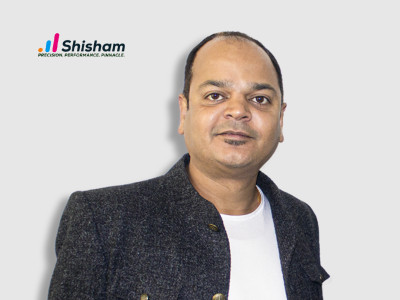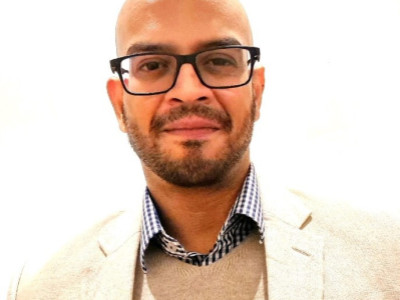The ‘New Normal’ – As Crystal Clear as Muddy Waters
Authored by Priyanka Desai, Founder and Partner at Coral Research Services.
It’s been many years since I passed out of B-School, and what I can remember and recall more vividly are things that happened out of the class and textbooks. But there is this one quote of the Marketing Professor, which remains firmly etched in my memory - ‘As Crystal clear as muddy waters’!
What drew sniggers then, makes a lot of sense today. This oxymoron seems to be such an apt description of this strange period of Unfamiliar Monotony, that we are living in:
An everyday which is locked in sameness and still does not feel part of our daily routine. We struggle with the familiarity of the same activities, the same people interactions, the same chores. And so, to break the monotony of familiarity, resort to cooking different items, connecting with different sets of people online
And yet on the other hand, a completely different and unprecedented scenario – one that offers no certainties, no comfort. When will it come to pass? Will life ever be the same again? What will change and what will revert back to usual?
And so the ‘new normal’ seems a handy term to comfortably encapsulate the familiar and the unfamiliar, that which we have a handle on and that which we are struggling to cope with, the paradoxes and the conundrums…
So if the ‘new normal’ is ambiguous, then how does it manifest itself in behavior?
People experiencing stress and loss of control due to ambiguity, have different coping mechanisms:
Some resort to seeking comfort from the familiar – there is a wave of nostalgia all around, with people watching reruns of old TV shows, digging up old photographs from family albums – relics of a carefree, trouble free past. And when mythological soaps like Ramayana, Mahabharat and other popular DD shows make a reappearance, then these are also in a way symbols of hope – enduring values, ideas, brands that have withstood the challenges of time
Some resort to ‘mood elevating’ activities which can help distract, give emotional pleasure even if its transient in nature – social media is rife with people showcasing their fitness or culinary skills. Whether its food or exercise, both help in releasing endorphins, the body’s ‘happy hormones’. The concept of ‘Comfort food’ stems from people resorting to food to help alleviate mood, trigger a positive feeling or evoke a happy, comforting memory
Then there is this primordial urge to get back to one’s roots…to get away from the city and head back to the real India – for the migrants trying to return home, their distant village now stands out as a lighthouse, a beacon of hope where they will get the comfort and care, which the city denied. But there also seem to be urban residents expressing their desire to get away from the city, perhaps relocate to smaller townships and lead a simpler way of life.
And in this context, I read an interesting view put forward by the author Ahmed Ali in his book ‘Twilight in Delhi’. When the British were colonizing India, they took it upon themselves to plant western ideas and promote ‘knowledge of the sciences’ through education. With knowledge being imparted in English, soon the old languages like Persian, Arabic and Sanskrit were relegated to the sidelines. But westernization was confined to the sophisticated urban population and the real India living in villages, remained untouched to a large extent. The real India which has been able to preserve its symbols and spirit from global influence. And perhaps somewhere deep down, this belief still prevails that the countryside is able to better insulate itself from these global influences and disturbances.
Tanuja a migrant worker in Gurgaon says with firm conviction, “no one in my village or the 9 villages surrounding my village, has got affected. Everyone is carrying on with their lives…farming, tending to their cattle….It’s only in the nearby big cities, that cops are insisting that people wear masks”
While anxiety driven people try and navigate through these muddy waters, it is now more than ever, that they need empathy to help cope with the ‘new normal’ and find their ‘own normal’. Empathy that recognizes anxiety, fear, loneliness, loss of control and reassures them that they are not alone.
And here is where brand messaging and initiatives can play a significant role in recognizing and addressing these emotions, need states and thereby driving meaningful engagement and connect during this time.
During the initial stages of the lockdown, most brand communication emphasized on the need to ‘Stay Indoors, Stay Safe’, maintain hygiene and social distancing – all of which helped drive awareness, educate the consumer and more importantly help them in regaining some sense of control through protection and security. Product categories linked to health and hygiene became front runners and ‘Immunity building’ has now become the new mantra.
But now it’s been over 50 days and still there is no clarity on how much longer one will need to stay at home, maintaining this social distance. Isolation, uncertainty, economic pressures, fear are all emotions that people are trying to deal with. And this is when they need a voice of hope, reassurance, care – at this point, brand narratives which send out signals of hope, positivity, the much needed human touch, will be appreciated and remembered.
Brooke Bond’s recent ‘Swaad apnepan ka’ ad depicts a neighbor’s act of kindness and stands out as a good example of a brand recognizing the need to highlight empathy and humanness, to reassure people that they are not alone and how social ties can be maintained without flouting safety norms.
And whilst we are trying to make sense of the ‘new normal’, let us ensure that compassion, empathy and humanness are a part of that and here to stay.
















Share
Facebook
YouTube
Tweet
Twitter
LinkedIn